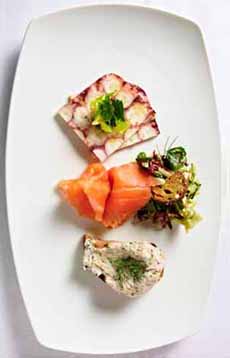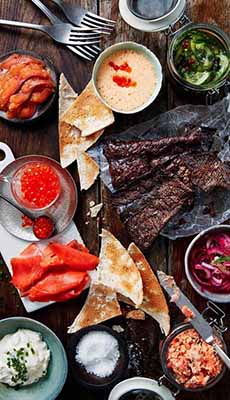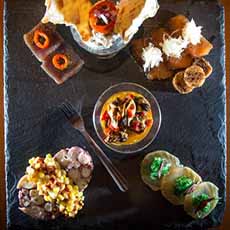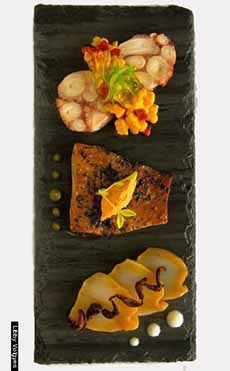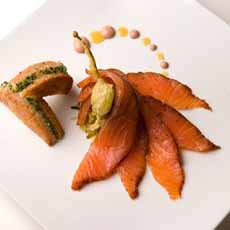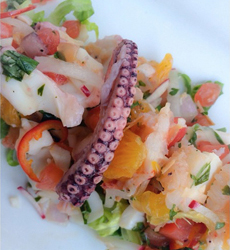TIP OF THE DAY: Seacuterie Instead Of Charcuterie
|
|
Back in 2017 we wrote an article about seacuterie (see-KEW-tuh-ree). It’s the seafood-based version of charcuterie. Instead of cured meats (mortadella, prosciutto, salami, etc.) and cheeses, seacuterie leaves the “turf” for the “surf”: seafood choices that are equally tasty, more healthful, and appeal to consumers who want to eat less meat or more sustainable foods in general. We have long served charcuterie—and now, seacuterie—on a board with cocktails, or individually plated as a first course with dinners. So… Seacuterie is a different approach to two popular starters: A classic seafood platter is laden with some assortment of clams, crabs, langoustines, lobster, mussels, oysters, prawns, scallops and shrimp. Occasionally, more exotic mollusks like cockles, periwinkles or snails will appear; and if we’re lucky, one of our favorite shellfish, sea urchin (uni). Seafood platter items are served raw or lightly cooked (boiled, poached). Here’s where a seacuterie board or plate diverges: Seacuterie can include some seafood platter items, but it adds complexity to the variety by adding fish and preparations. And the good news is that you don’t have to prepare them all yourself (or even any of them, if you so choose). Seacuterie pairs best with white wine or rosé and sparkling wines. But you can serve lighter reds like Beaujolais and Pinot Noir. Plus: Check out these non-sweet cocktails. The birth of seacuterie is attributed to the endlessly creative New York Chef David Burke. In 1998 at the helm of the [late, lamented] Park Avenue Café in Manhattan, he riffed on the Scandinavian cured salmon dish, gravlax [source]. It was a dazzling concept, bursting with flavor, unheard of at the time. Trading the traditional dill, sugar and salt marinade, he used the more assertive “pastrami spices” (actually black pepper, coriander, parsley, paprika and maple syrup. Once marinated and preserved, the salmon sides are sliced in the same way as pastrami. Instead of the thin slices of gravlax, he sliced the cured salmon in the manner of pastrami. Here’s the recipe. The result, Pastrami Salmon, became a sensation among food writers and the foodies who follow them. Burke subsequently trademarked the name [source]. And the kernel of a future trend—seacuterie—was born. We are fortunate to have had Pastrami Salmon numerous times at the Park Avenue Café. What’s next? Stay tuned! |
|
|
________________ *Plateau de fruits de mer is pronounced plah-TOE duh froo-EE duh MARE. It is a French term for means a platter of the fruits of the sea, i.e., seafood. In French, plateau means platter or tray, as opposed to its meaning in English, a geological term for a high plain. †You can purchase a loin of tuna or salmon, freeze it and slice it thinly while still partially frozen. Note that with salmon, you should be sure that the pin bones have been removed.
|
||
